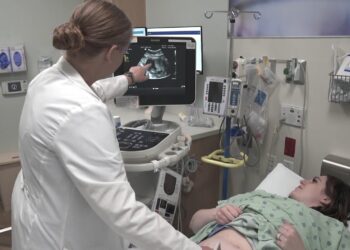LANSING, Mich. (WZMQ) – The $3 million renovation work in Michigan’s Capitol building is almost complete. Over 150 feet of scaffolding has been set up in the Capitol building since July of 2023. The scaffolding weighs approximately 70 tons and consists of more than 10,000 individual pieces and will begin to be torn down on Tuesday, April 9th.
The project included paint restoration to the 8 muse or allegory paintings, as well as to the surrounding structure. Barb Thumudo, the assistant director of Capitol facilities says it’s been a long and very careful process.
“I’ve been here 20 years, so I’ve never entered the building and was bored with it.” Thumudo said. “Even after 20 years, there are still elements that you would see that surprise you that you hadn’t noticed before and so I am very proud to have been part of the project.”
Michigan’s capitol building has the most painted details to exist in any capitol building in the U.S.. Touch-ups only occur every 40 years, making this the fourth time that the rotunda has been scaffolded since the Capitol was constructed. The first time was in 1930, a little more than 50 years after the Capitol was built, the second was in the 1950s, and the third was during the 1989-1992 restoration.
The restoration crew said there were 30+ years of dirt and dust sitting on ledges that could not be reached without a scaffold and no major leaking, but temperature fluctuations caused expansion and contractions that caused noticeable popping and releasing of paint. The skeletal frame of the dome is cast iron, but the surfaces are sheet metal.
The work should last at least 40 years, but likely longer because improved systems and environmental controls should result in less damage due to leaks and condensation. This interior dome restoration is the last major piece of work that needs to be done, however, the crews said the building will always require ongoing maintenance work because there are nine acres of hand-painted surfaces and other small projects that require attention.
The paintings of the allegorical figures, also called the paintings of the muses are by Italian-born artist Tommaso Juglaris who was living and working in Boston at the time and was selected after a national artist search. The paintings are supposed to represent eight priorities of the state in the late 19th Century for the future of Michigan: Arts, Agriculture, Law (or philosophy), Sciences, Justice, Industry, Commerce, and Education.
The allegories were painted in a studio in Boston and then shipped to Michigan and mounted in the dome in 1886. They are roughly 8 feet tall by 5 feet across. The paintings have slits in them to fit the curved interior surface of the dome, when looking up close, you can see the tacks they used to hang the paintings, which were left in.
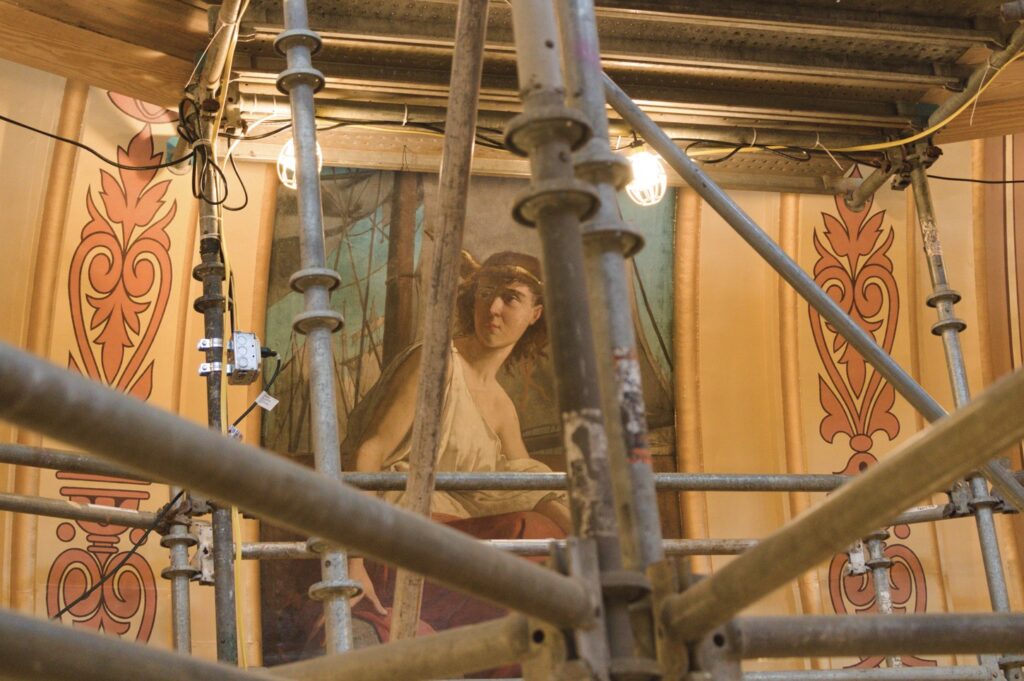
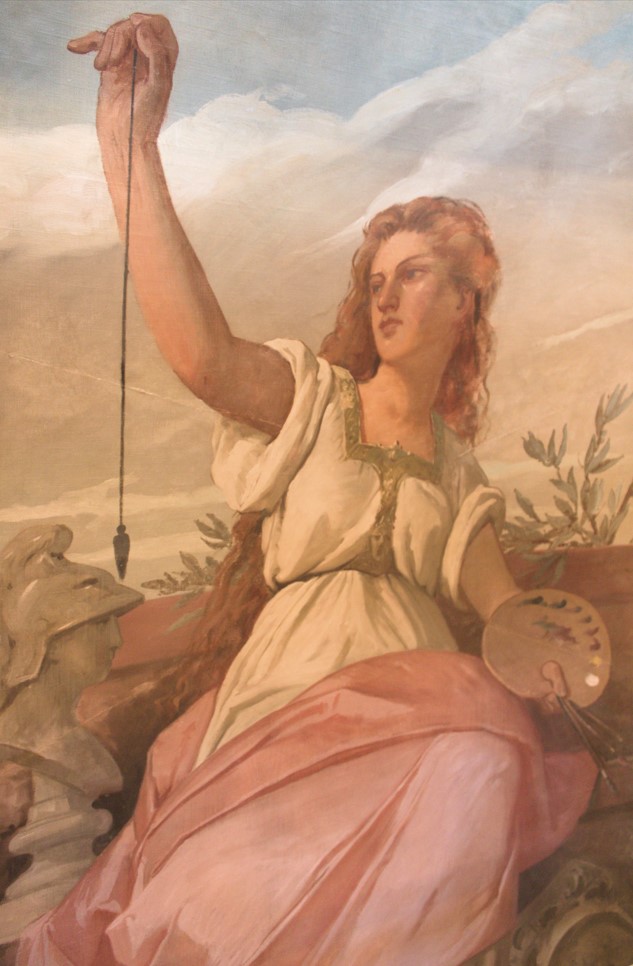
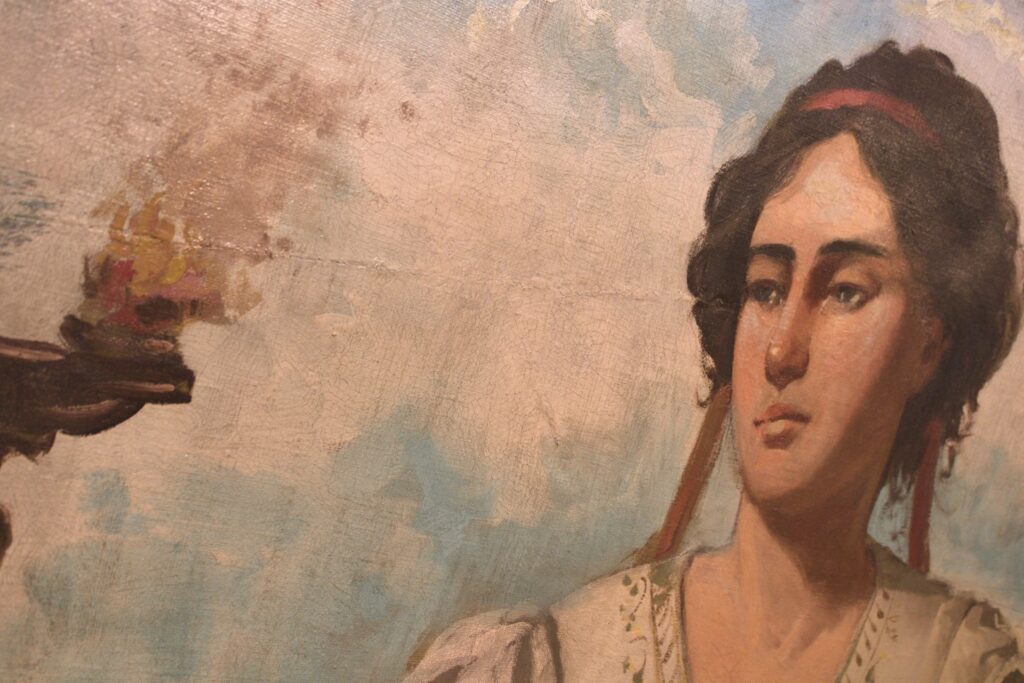
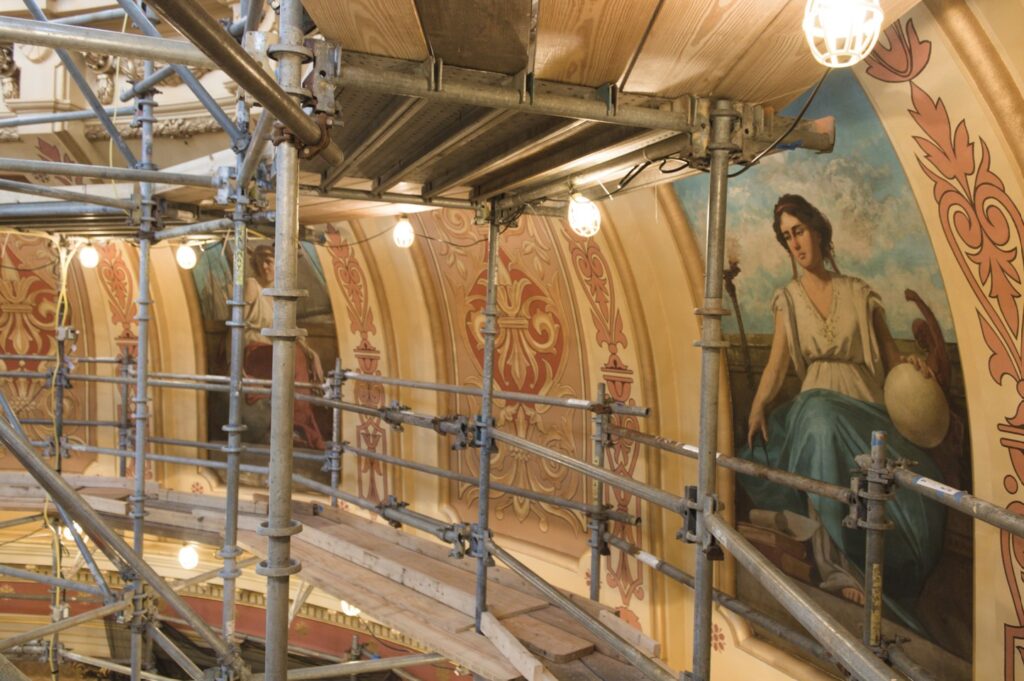
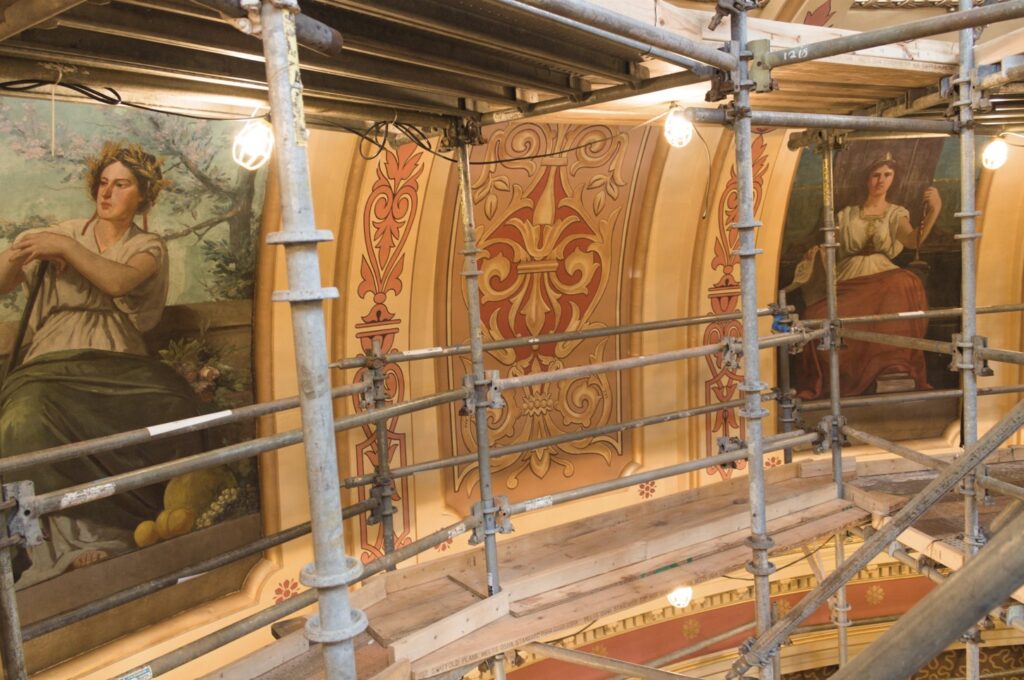
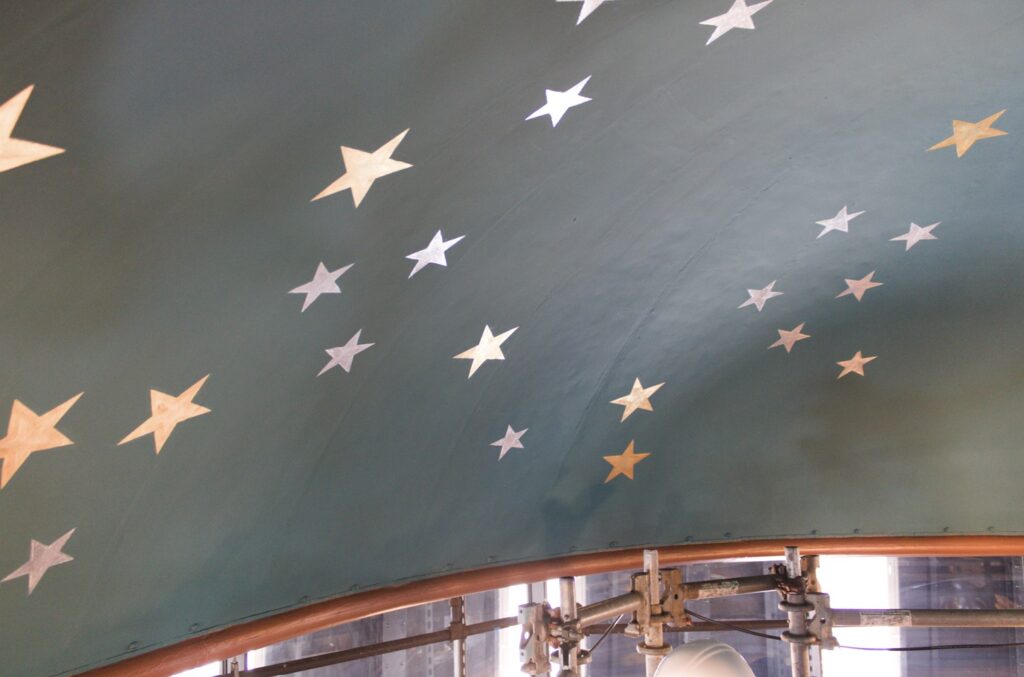
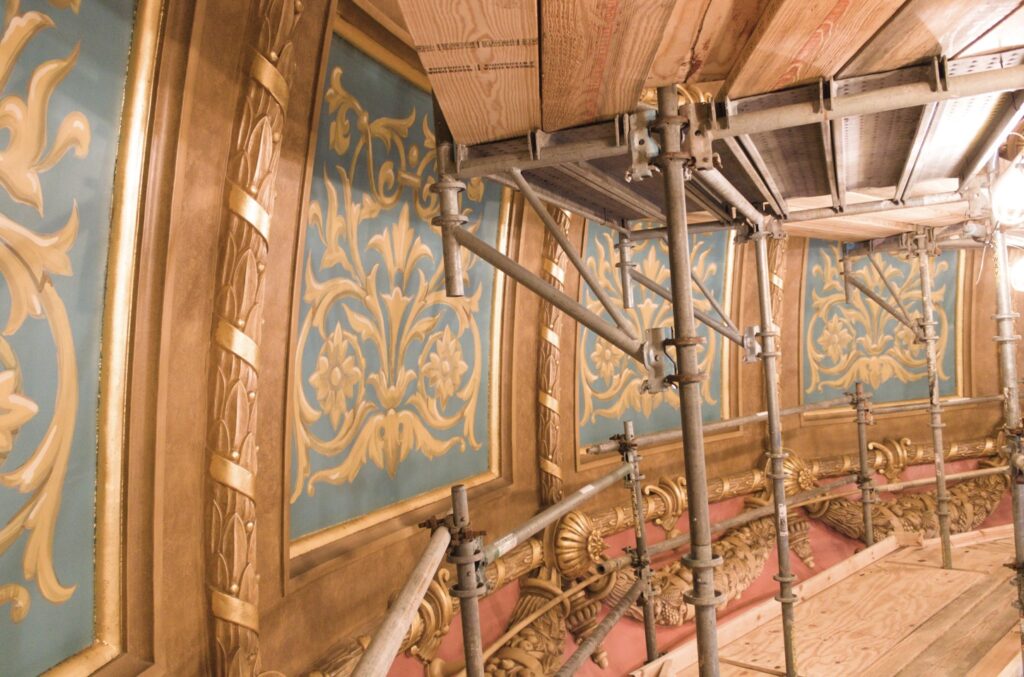
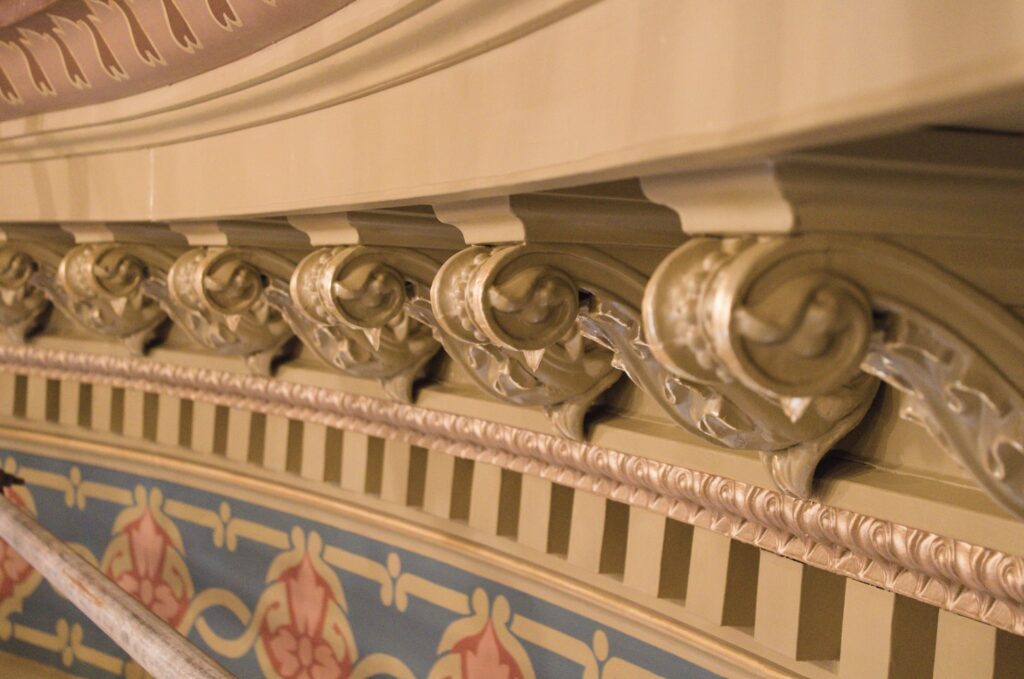
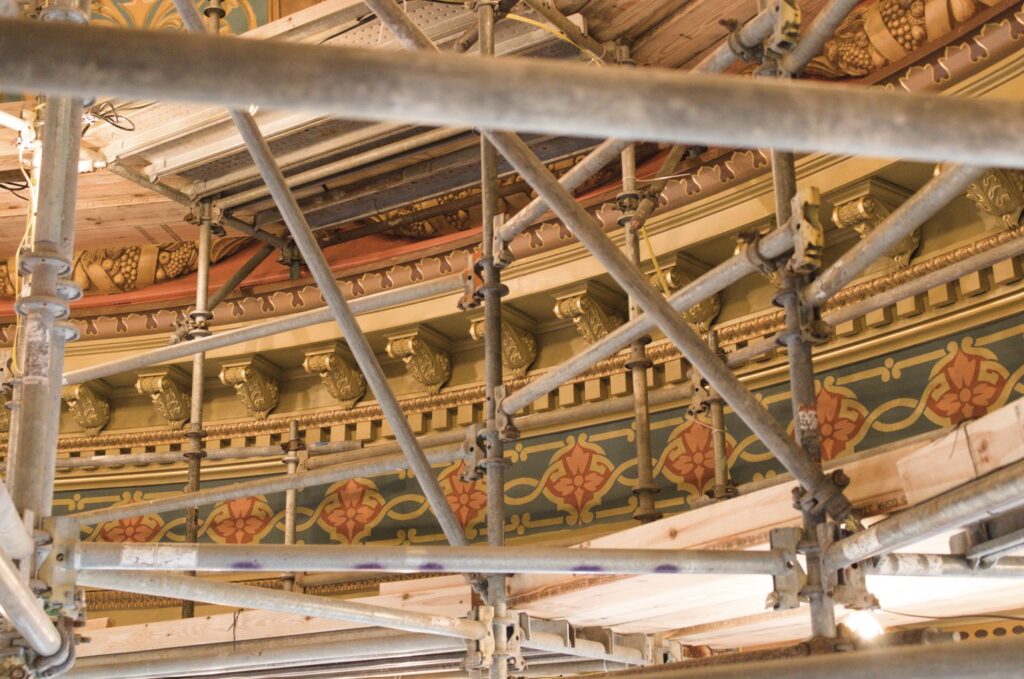
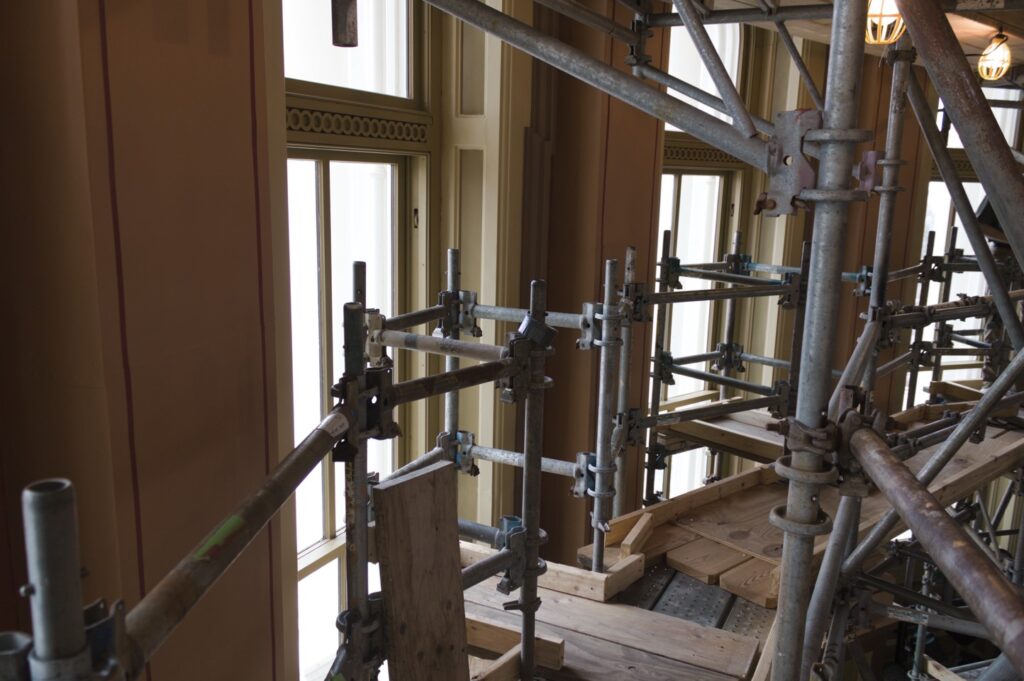
The art restoration work on the paintings of the allegorical figures/ the muses was done by Gianfranco Pocobene Studio. The paintings had a varnish coat during the first restoration so they were still in pretty good shape. The first thing they did was clean them, then consolidate any loose or flaking paint by injecting an adhesive behind it. A layer of varnish was added to saturate the painting which protects it and helps bring out the richness of the original colors. They then went back and filled in missing areas in a process called inpainting, after the paint was dry, they spot varnished.
Around the rotunda, there are plenty of intricate details. There are 110 stars painted on the inner dome. If there was a significance to that number or pattern, it has been lost to history. They are not arranged to match any constellation that Capitol historians are aware of.
It’s anticipated the scaffolding will take 4 weeks to disassemble, and the rotunda will be open to the public again by June.











